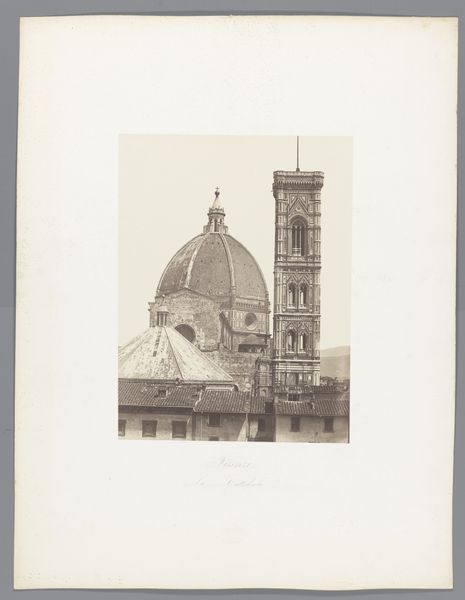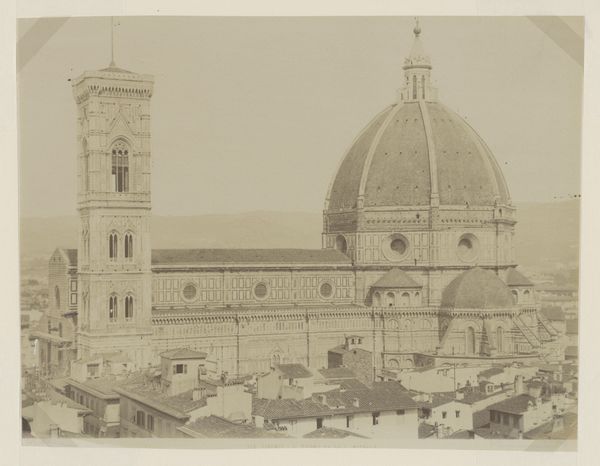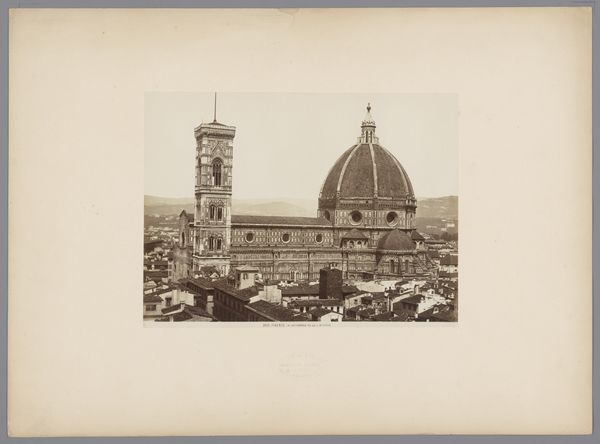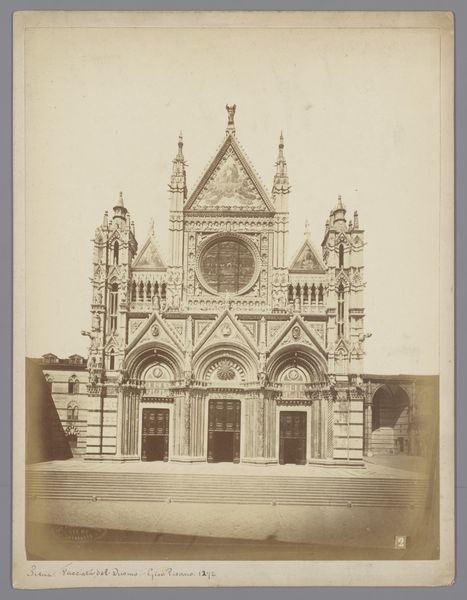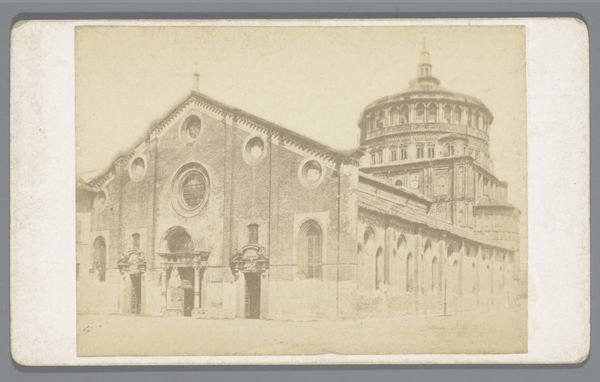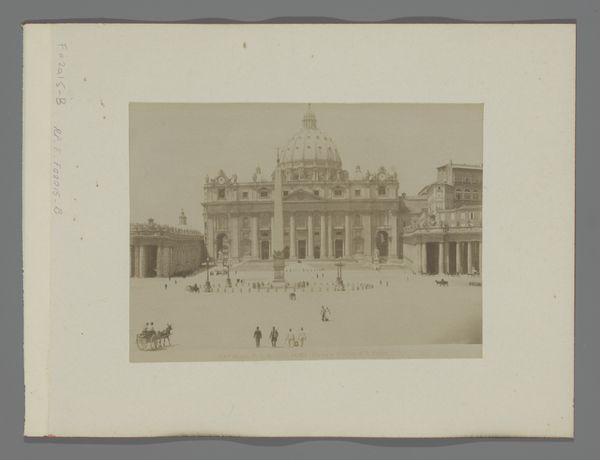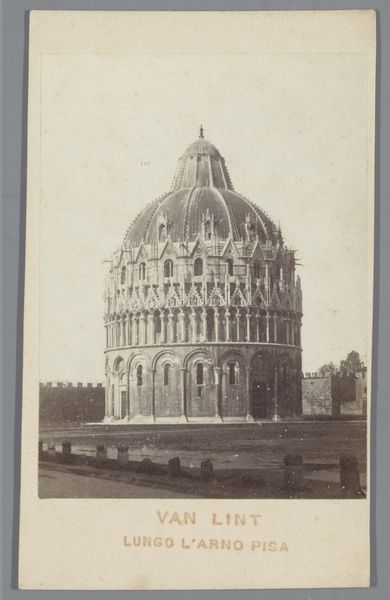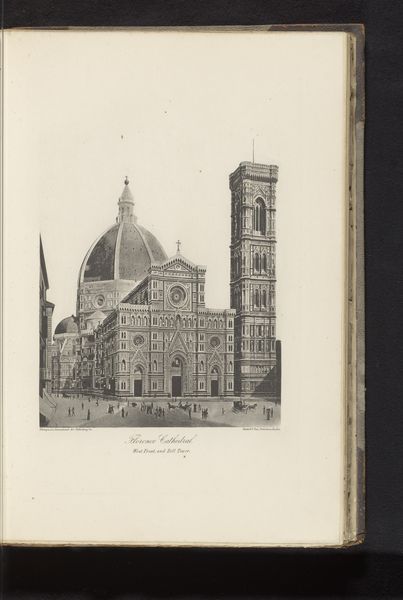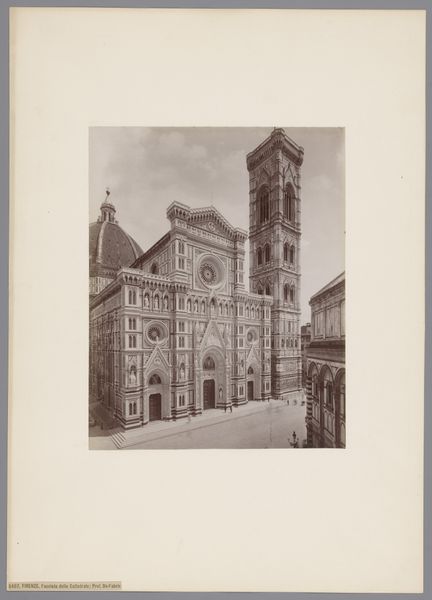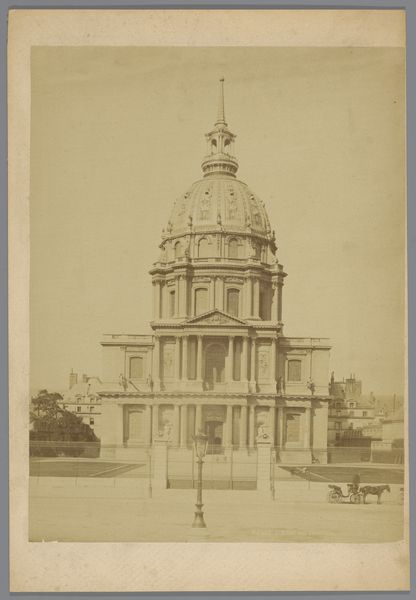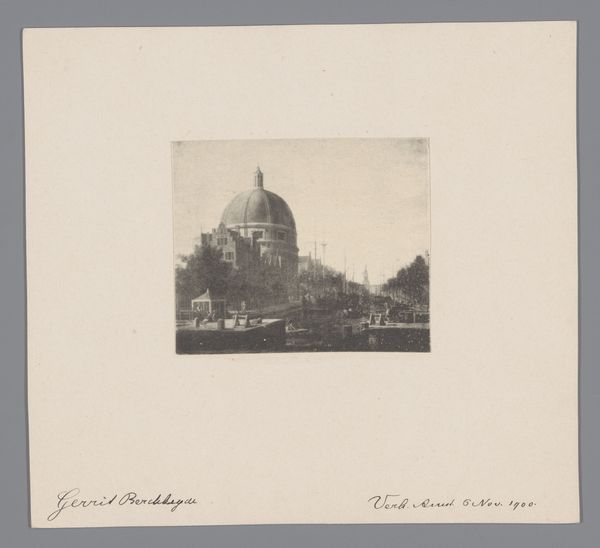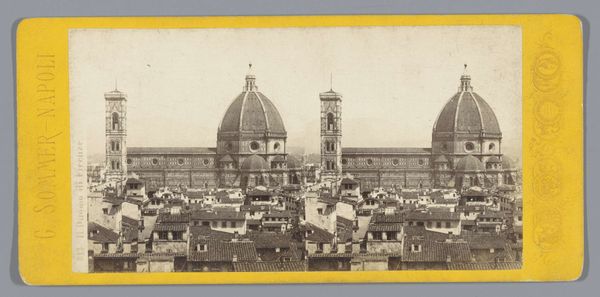
print, photography, architecture
# print
#
photography
#
cityscape
#
italian-renaissance
#
architecture
#
realism
Dimensions: height 252 mm, width 195 mm, height 356 mm, width 257 mm
Copyright: Rijks Museum: Open Domain
Curator: Looking at this print by Fratelli Alinari, dating roughly from 1857 to 1900, I feel completely humbled. It's called "Cathedral of Florence, Italy," and currently resides at the Rijksmuseum. There's just something about the sheer scale and intricacy… It's mesmerizing! Editor: I'm struck by the implied gaze here. The camera's perspective subtly reinforces architectural dominance, placing the surrounding city into relative insignificance, while underscoring Renaissance ideals and power dynamics... How do you feel about it? Curator: Oh, that’s interesting. I guess I hadn’t thought about it like that. For me, it's the way the light interacts with the architecture—the patterns the arches cast on themselves— that almost makes the structure seem organic, as if the city sprung the Cathedral, naturally. It almost seems less about intentional architectural authority, and more like a feat of nature? Editor: I understand what you mean—it is undoubtedly awe-inspiring from a design and architectural achievement standpoint, although this work cannot escape its role in cultural hegemony. But it's worth investigating what these historical images, especially through photographic practices, reproduce in terms of colonialist gaze, wouldn't you agree? Curator: I suppose I'm coming from a space of personal admiration, of being an art tourist gazing with innocent eyes and a wanting to share how amazing it feels, you know? Does that makes sense? Editor: That makes perfect sense. And the aesthetic appreciation of the piece can still coexist with this discussion of a social and political reading. To add on to your points about how the building seems to have come alive in this shot – something I found particularly moving when visiting this place- one has to also consider that its visual narrative reflects and shapes cultural values, thus maintaining power and status! Curator: A constant push and pull. That’s so often what it comes down to, isn't it? Editor: It does, doesn’t it? I'm always glad when this work has the potential to reveal something new. Thanks for lending a fresh perspective!
Comments
No comments
Be the first to comment and join the conversation on the ultimate creative platform.
